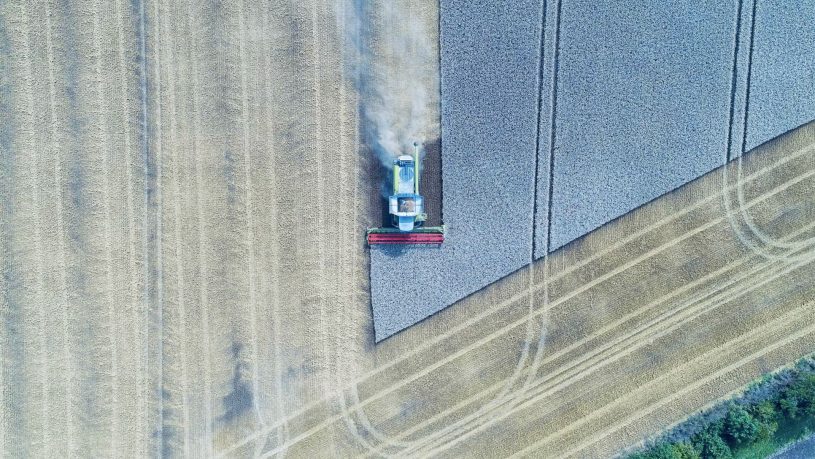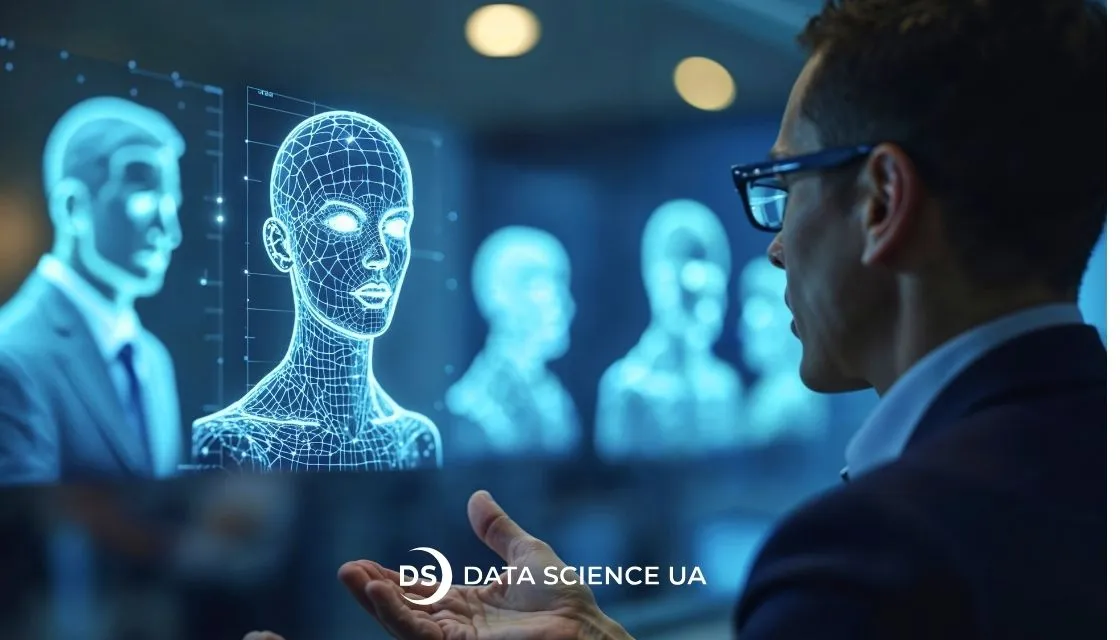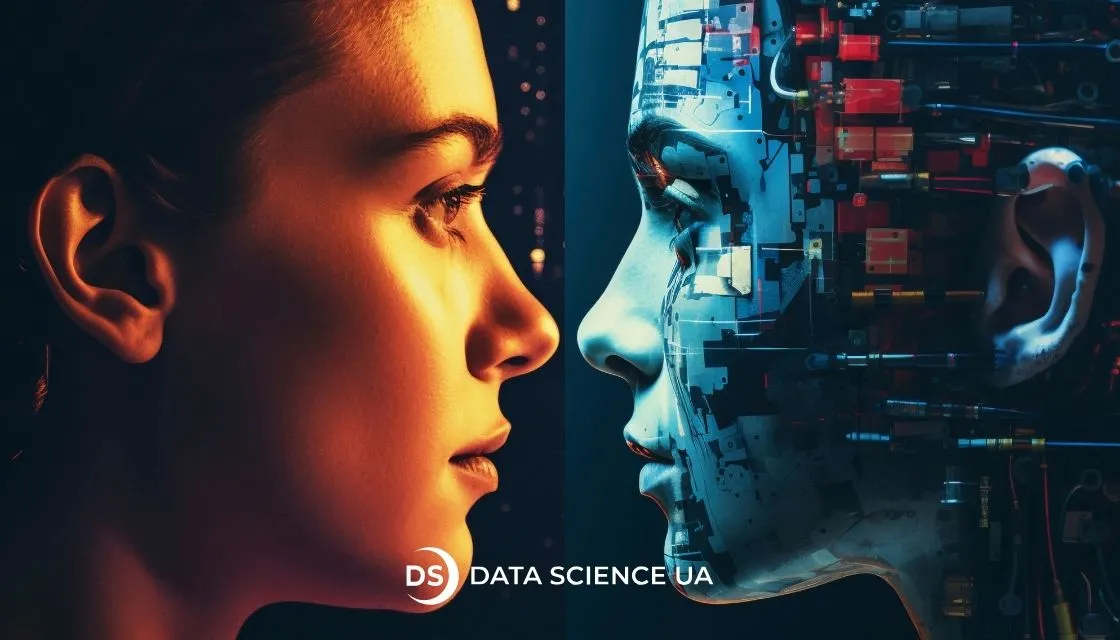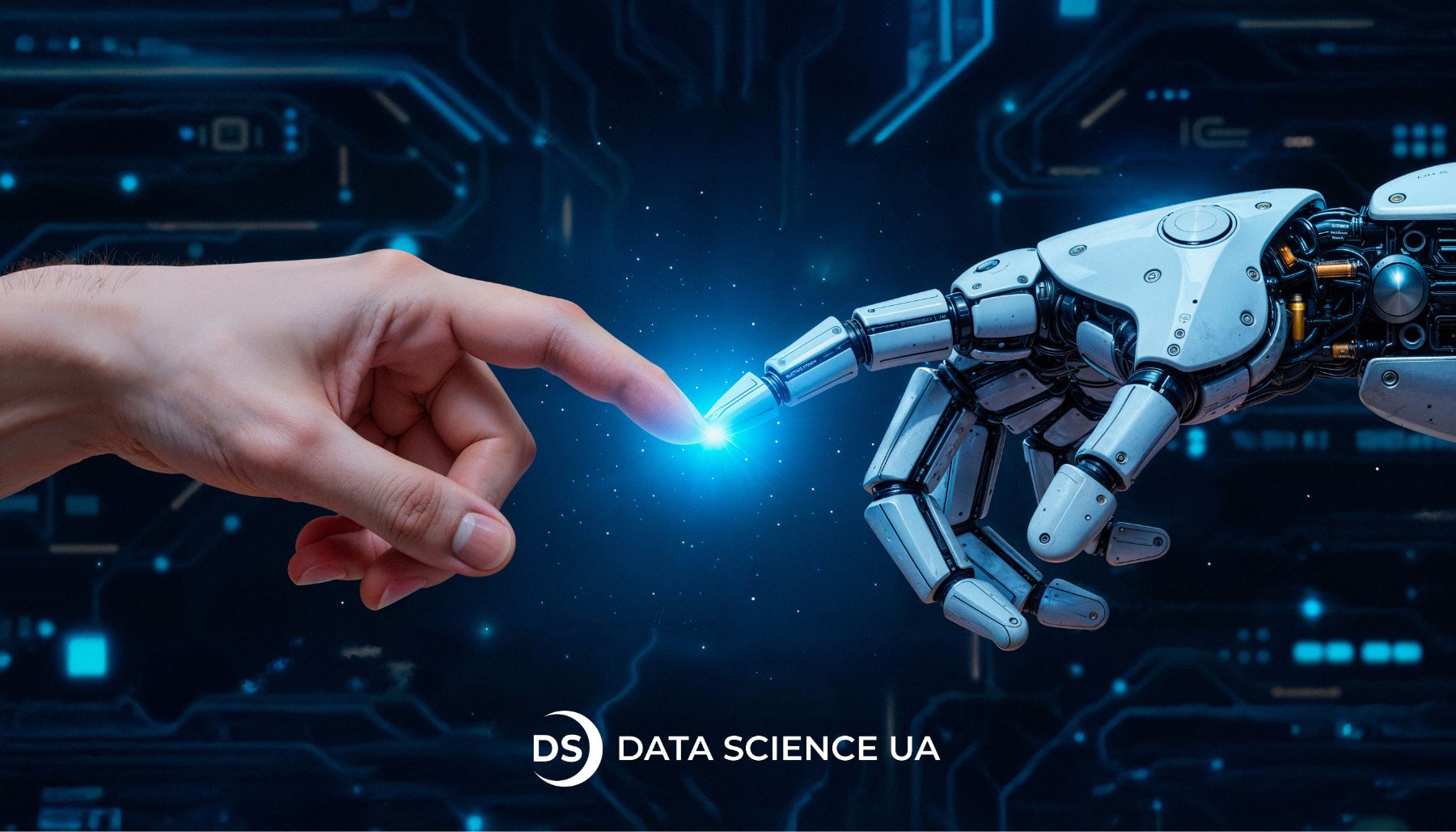AI future in technology
As the world faces enormous sustainability challenges, new technologies, including Artificial Intelligence (AI), promise to play a crucial role in addressing them. AI-driven solutions can help improve resource efficiency, reduce waste, and mitigate the climate crisis. In this article, we’ll explore how AI can enable a sustainable future and what sustainable AI is.
How AI Can Enable A Sustainable Future
Research conducted by PwC UK, commissioned by Microsoft, examined the economic and emissions impact of AI adoption in agriculture, water, energy, and transport. The research found that using AI for environmental applications could make a significant contribution to the global economy in 2030, potentially adding up to $5.2 trillion USD, a 4.4% increase compared to business as usual. Additionally, AI could reduce worldwide greenhouse gas (GHG) emissions by 4% in 2030, equivalent to the annual emissions of Australia, Canada, and Japan combined.
AI can be used in several economic sectors and situations to manage environmental impacts and climate change. It can contribute to clean distributed energy grids, precision agriculture, sustainable supply chains, environmental monitoring, and disaster response. Here are some examples of how AI is already enabling a sustainable future:
- Clean Energy – AI is being used in renewable energy to improve system efficiency, lowering the cost of energy, and measuring energy production.
- Agriculture – Precision farming techniques and real-time data collection are being used to reduce inputs, increase yields, and lower carbon emissions and waste.
- Transport – AI technologies are helping to optimize transport services, reduce congestion, and improve fuel efficiency in the aviation, shipping, and automotive industries.
- Environmental Monitoring – AI-powered cameras and sensors can detect changes in environmental factors and adapt monitoring systems accordingly.
In addition to supporting economic growth and reducing emissions, AI is creating new employment opportunities in sectors such as environmental monitoring, precision agriculture, and clean energy.
What is Sustainable AI?
Sustainable AI, also known as AI for sustainability or sustainable artificial intelligence, refers to the use of AI technologies and systems in ways that are environmentally and socially responsible. The implementation of sustainable AI seeks to optimize the benefits of AI technologies while ensuring that their use doesn’t undermine sustainability or exacerbate inequalities.
Here are some features of sustainable AI:
- Transparency: Sustainable AI systems should be transparent and explainable, with clear decision-making processes. This helps to avoid biases and promote fairness, and accountability so that the errors can be identified and corrected.
- Privacy and Data Protection: Sustainable AI systems should avoid infringing on individual privacy by following strict data protection protocols, especially when dealing with sensitive personal data.
- Resource Efficiency: Sustainable AI systems should be designed to consume fewer resources such as computing power and energy. Additionally, the hardware used should be easy to recycle or dispose of in a sustainable manner, and the development process should minimize e-waste.
- Social and Environmental Impact: Sustainable AI is deployed in ways that do not harm people or nature. This means avoiding actions that exacerbate existing social or economic inequalities, such as automation leading to job loss.
AI has enormous potential to help create a more sustainable future, and numerous applications already demonstrate its benefits. However, it is important to ensure that AI is sustainable and ethically responsible, considering its impact on society and the environment. Engineers, policymakers, and academics need to work together to develop sustainable AI systems, which offer low environmental impact, social responsibility, and support sustainable development. By creating more sustainable AI, we will achieve the goals of sustainable development more quickly, efficiently, and with fewer adverse effects. Moving forward, we must continue to invest in sustainable AI and work towards a more sustainable future for all.
Environmental sustainability of AI
In today’s rapidly changing world, environmental sustainability has become a critical concern for individuals, businesses, and governments alike. As we strive to find innovative solutions to combat climate change and preserve our planet, one technology stands out for its potential to drive sustainable solutions – Artificial Intelligence (AI). In this article, we will explore how AI can power sustainable solutions in various sectors, including energy, agriculture, transportation, and waste management. We will also address concerns about whether AI is bad for the environment and highlight the importance of sustainable AI.
Powering Sustainable Solutions with AI
AI has the power to revolutionize the way we tackle environmental challenges. According to Dr. Priyanka Shrivastava, a researcher and professor at the Hult International Business School, AI can help companies generate sustainability reports and assess their sustainable contributions effectively. By leveraging AI technologies, businesses can analyze large-scale interconnected databases, develop coordinated actions, and make data-driven decisions to promote environmental preservation and sustainability.
Energy
The energy sector plays a crucial role in achieving environmental sustainability. AI can significantly contribute to this effort by enabling the development of renewable energy sources and optimizing energy consumption. With smart networks powered by AI, energy consumption can be matched to periods when renewable sources like solar and wind power are readily available. This optimization not only reduces the carbon footprint but also promotes efficient use of resources.

Agriculture
When it comes to sustainable agriculture, AI can play a vital role in optimizing resource usage, increasing crop yields, and minimizing environmental impact. Precision farming techniques fueled by AI enable farmers to monitor and respond to the specific needs of crops, resulting in reduced chemical use and water consumption. With AI-powered systems, farmers can make data-driven decisions about planting, irrigation, and pest control, leading to more sustainable agricultural practices.

Transportation
Transportation is a major contributor to greenhouse gas emissions, making it a crucial sector for AI-driven sustainable solutions. AI can optimize transport services, reduce congestion, and improve fuel efficiency in various modes of transportation, including aviation, shipping, and automotive industries. By utilizing AI algorithms to analyze real-time data, transportation systems can be streamlined, helping reduce emissions and promote more sustainable mobility.
Waste Management
Efficient waste management is essential for environmental sustainability, and AI can revolutionize the way we handle waste. AI-powered systems can analyze and identify patterns in data to optimize waste collection routes and schedules, reducing fuel consumption and carbon emissions. Additionally, AI can facilitate recycling and waste sorting processes by automating the identification and separation of different types of waste, making these processes more effective and sustainable.
Environmental Sustainability of AI: Balancing Benefits and Energy Consumption
In today’s rapidly changing world, environmental sustainability has become a top priority. As we seek innovative solutions to combat climate change and preserve our planet, one technology shows great promise – Artificial Intelligence (AI). AI can revolutionize the way we approach environmental challenges, from climate modeling and prediction to carbon footprint reduction. In this article, we will explore the environmental sustainability of AI and how it can serve as a revolutionary tool for solving environmental problems.
Сlimate Modeling and Prediction
One of the key ways AI can contribute to environmental sustainability is through climate modeling and prediction. AI algorithms can analyze vast amounts of climate data, enabling scientists to make accurate predictions about future changes. This capability is crucial for understanding the impact of climate change and developing effective strategies for mitigation and adaptation.
By leveraging AI-powered climate modeling tools, researchers can simulate various scenarios, estimate the future trajectory of climate change, and identify potential risks and vulnerabilities. This knowledge is essential for policymakers and organizations to develop informed strategies, allocate resources effectively, and implement climate-resilient measures.
AI and Carbon Footprint Reduction
Reducing carbon emissions is essential for mitigating climate change, and AI can play a significant role in achieving this goal. AI-powered systems can optimize energy consumption, improve energy efficiency, and facilitate the transition to renewable energy sources.
By analyzing data and identifying patterns, AI algorithms can help identify energy inefficiencies and recommend optimization measures to reduce energy consumption. AI can also support the integration and management of renewable energy sources, such as solar and wind, by optimizing their production and storage capabilities. This not only reduces reliance on fossil fuels but also contributes to a significant reduction in carbon emissions.
Furthermore, AI can facilitate smart grid management, enabling more efficient distribution and consumption of electricity while minimizing waste. By balancing energy supply and demand in real-time, AI can reduce both costs and environmental impact.
AI: A Revolution in Environmental Problem-Solving
AI represents a revolutionary tool for solving complex environmental problems. Its ability to process vast amounts of data and identify patterns enables faster and more accurate analysis of environmental issues. This can range from monitoring deforestation and water pollution to detecting air quality issues and tracking wildlife populations.
AI-powered systems can analyze satellite imagery, sensor data, and other environmental inputs to provide real-time insights into ecosystem health and identify areas that require intervention. By automating the data analysis process, AI saves valuable time and resources, enabling quicker and more effective decision-making.
Additionally, AI can assist in environmental monitoring and enforcement efforts. For example, AI algorithms can analyze data from remote sensors to detect illegal logging activities or identify sources of water contamination. This proactive approach allows authorities to take timely action and prevent further harm to the environment.
Balancing AI Benefits and Energy Consumption
While AI offers immense benefits for environmental sustainability, it is essential to consider its energy consumption. AI algorithms require significant computational power, which can result in a substantial energy footprint.
To ensure the environmental sustainability of AI, it is vital to balance the benefits of AI with energy efficiency measures. This can be achieved through the use of energy-efficient hardware, optimization of algorithms, and the implementation of sustainable AI infrastructure. Additionally, renewable energy sources can power AI data centers and computational facilities, further reducing their carbon footprint.
Organizations and policymakers must prioritize the development and deployment of sustainable AI practices. This includes investing in research and development to improve energy efficiency, developing guidelines for responsible AI usage, and encouraging transparency and accountability in the AI industry.
AI and the Sustainable Development Goals (SDGs)
Artificial Intelligence (AI) has the potential to significantly contribute to achieving the Sustainable Development Goals (SDGs) set by the United Nations. These 17 global goals aim to address the world’s most pressing social, economic, and environmental challenges by 2030. In this chapter, we will explore the ways in which AI can support the SDGs and drive sustainable development across various sectors.
AI for Ending Poverty and Hunger (SDG 1 and 2)
AI can play a crucial role in ending poverty and hunger, the first two SDGs. By analyzing vast datasets and identifying patterns, AI algorithms can help organizations and governments to develop targeted poverty eradication programs and optimize food production and distribution systems.
AI-powered systems can predict poverty levels and identify populations at risk, enabling policymakers to design more effective poverty alleviation policies. By understanding the root causes and dynamics of poverty, AI can guide interventions and ensure resources are allocated where they are most needed.
Additionally, AI can enhance agricultural practices and improve crop yields. Through precision farming techniques, AI can monitor weather conditions, soil moisture levels, and crop health, enabling farmers to make data-driven decisions. This leads to efficient resource usage, reduced dependence on harmful chemicals, increased food productivity, and improved food security.
AI for Quality Education and Lifelong Learning (SDG 4)
Providing quality education for all is a key aspect of the fourth SDG. AI technologies can enhance access to education, promote personalized learning experiences, and empower educators.
AI-powered platforms can deliver educational content to remote and underserved communities, breaking down geographical barriers. These platforms can adapt to individual learning needs, allowing students to learn at their own pace and optimize their learning outcomes.
Furthermore, AI can assist teachers in creating personalized lesson plans and assessments. By analyzing student performance data, AI algorithms can identify learning gaps and recommend tailored interventions. This personalized approach improves educational outcomes and ensures that no one is left behind in the pursuit of quality education.
A Green and Smart Future with AI
AI has the potential to shape a green and smart future, where sustainable practices are integrated into every aspect of our lives. In this chapter, we will explore how AI can drive environmental sustainability and transform various sectors toward a greener and smarter future.
As the world grapples with the challenges of climate change, energy efficiency and renewable energy are critical for reducing carbon emissions. AI can optimize energy usage in various sectors, identifying inefficiencies and recommending energy-saving measures.
By analyzing real-time data from smart grids and energy management systems, AI algorithms can balance energy supply and demand, reducing waste and enhancing energy efficiency. AI can also optimize the integration and management of renewable energy sources, such as solar and wind, ensuring their maximum utilization.
FAQ
Are there specific AI-driven solutions that address climate change, and how effective are they?
Yes, there are specific AI-driven solutions that address climate change. AI can help optimize energy consumption, manage renewable energy grids, predict extreme weather events, and improve climate modeling. AI algorithms can analyze large datasets to identify patterns and trends, enabling better understanding and prediction of climate change impacts.
What ethical considerations should be taken into account when using AI for sustainability?
When using AI for sustainability, there are several ethical considerations that should be taken into account. Firstly, transparency and accountability are crucial. AI systems should be designed and implemented in a way that is explainable and can be audited to ensure fairness, avoid biases, and prevent unintended negative consequences.
Are there any challenges or limitations associated with implementing AI for sustainability initiatives?
One challenge is the availability and quality of data. AI models rely on vast amounts of high-quality data to produce reliable and accurate results. Obtaining such data, especially for sustainability-related issues, can be challenging. Additionally, there may be a lack of expertise and resources for implementing AI solutions, hindering widespread adoption.
How can businesses and individuals get involved in promoting AI for a sustainable future?
Businesses can invest in sustainable AI research and development, collaborate with experts and organizations working on AI for sustainability, and integrate AI technologies into their own sustainable practices. They can also support policies and initiatives that promote the responsible application of AI for sustainable development.






